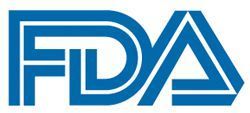Article
FDA Grants Priority Review to Omidubicel for Blood Cancers Requiring Transplant
Author(s):
The FDA has accepted a priority review of a biologics license application for omidubicel as a treatment for patients with blood cancers in need of allogenic hematopoietic stem cell transplant.
FDA

The FDA has accepted a priority review of a biologics license application (BLA) for omidubicel as a treatment for patients with blood cancers in need of allogenic hematopoietic stem cell transplant (HSCT).1
Drug maker Gamida Cell submitted the BLA based on results from a pivotal phase 3 trial (NCT02730299). Patients who received omidubicel had a median time to neutrophil engraftment of 12 days (95% CI, 10-14) compared with 22 days (95% CI, 19-25) in patients who received a standard umbilical cord blood (UCB) graft (P < .001).2
The FDA has set a Prescription Drug User Fee Act target action date of January 30, 2023, to rule on the BLA.
“The FDA’s acceptance of our BLA with priority review signifies a critical milestone in our mission to deliver a new stem cell therapy option for patients in need of a donor for an allogeneic stem cell transplant,” Gamida Cell chief executive officer Julian Adams, PhD, stated in a press release.
“We are encouraged by the positive and sustained follow-up results from patients participating in the phase 3 trial of omidubicel, including a positive overall survival trend one-year out from treatment,” he added. “These results provide promising rationale that, if approved, omidubicel could become a treatment of choice for patients in need of an [allogenic] HSCT transplant. We look forward to working with the FDA throughout the review process to bring omidubicel to patients as quickly as possible.”
Investigators evaluated omidubicel, an advanced cell therapy candidate developed as a potential life-saving allogenic HSCT, in an international, multi-center, randomized phase 3 trial. Eligible patients included those aged 12 to 65 years with hematologic malignancies who were candidates for myeloablative allogeneic HSCT and who did not have a matched sibling or matched unrelated adult donor readily available.
Key eligibility criteria included an available UCB unit HLA-matched at 4 or more loci with a total nucleated cell (TNC) count of 1.8 x 109 or higher, a TNC dose of 1.5 x 107 cells/kg, and a CD34-positive cell count of 8 x 106 or higher. Patients with marked or 3+ bone marrow fibrosis or chronic lymphocytic leukemia were excluded from the study.
Enrolled patients were transplanted with omidubicel (n = 52) or standard UCB (n = 55). The primary end point of the trial was median time to neutrophil engraftment. Secondary end points included the proportion of patients who achieved platelet engraftment by day 42, the proportion of patients with grade 2 or 3 bacterial or invasive fungal infections within the first 100 days after transplant, and the number of days alive and out of the hospital within the first 100 days after transplant.
Demographic and baseline characteristics were noted to be well balanced across the treatment arms. The majority of patients had acute myeloid leukemia (48%) or acute lymphoblastic leukemia (33%). Additionally, 34% of patients had a moderate disease risk index. Patients treated with omidubicel underwent transplant at a median of 41 days following randomization compared with 26 days for those who received UCB.
Additional data showed that the cumulative incidence of neutrophil engraftment by day 42 following transplantation for patients who received omidubicel was 96% with a median of 10 days (95% CI, 8-13) compared with 89% and with median of 20 days (95% CI, 18-24) for patients in the control arm (P < .001).
Patients in the omidubicel arm spent a median of 61 days (range, 0-89) out of the hospital in the first 100 days following transplant compared with 48 days (range, 0-84) in the control arm. The median time from transplant to discharge from the hospital was 27 days and 35 days for the omidubicel and control arms, respectively (P = .005).
Additionally, the cumulative incidence of first grade 2/3 bacterial or invasive fungal infections was 37% and 57% for patients in the omidubicel and control groups, respectively (P = .03). The rate of first grade 3 viral infection during the first year after transplantation was 10% and 26%, respectively (P = .02).
The incidence of grade 2 to 4 acute graft-vs-host disease (aGVHD) at day 100 was 56% in the omidubicel arm vs 43% in the control arm (13% difference: 95% CI, −6% to 30%; P = .18). The rates of grade 3 to 4 aGVHD at day 100 were 14% and 21%, respectively (–7% difference; 95% CI, −21% to 7%; P = .33). The cumulative incidence of all chronic GVHD (cGVHD) at 1 year was 35% for the omidubicel arm vs 29% for the control arm (6% difference; 95% CI, −14% to 25%; P = .57) and the 1-year incidence of moderate-to-severe cGVHD was 27% and 21%, respectively (6% difference; 95% CI, −11% to 24%; P = .49).
The incidence of serious treatment-emergent adverse effects possibly related to the stem cell product was 40% in the omidubicel group compared with 41% in the control group.
References
- Gamida Cell announces FDA acceptance of biologics license application for omidubicel with priority review. News release. Gamida Cell. August 1, 2022. Accessed August 1, 2022. https://bit.ly/3zoSe9N
- Horwitz ME, Stiff PJ, Cutler C, et al. Omidubicel vs standard myeloablative umbilical cord blood transplantation: results of a phase 3 randomized study. Blood. 2021;138(16):1429-1440. doi: 10.1182/blood.2021011719









